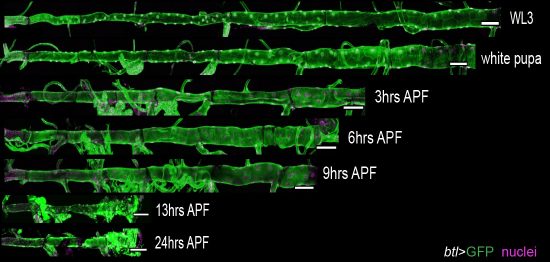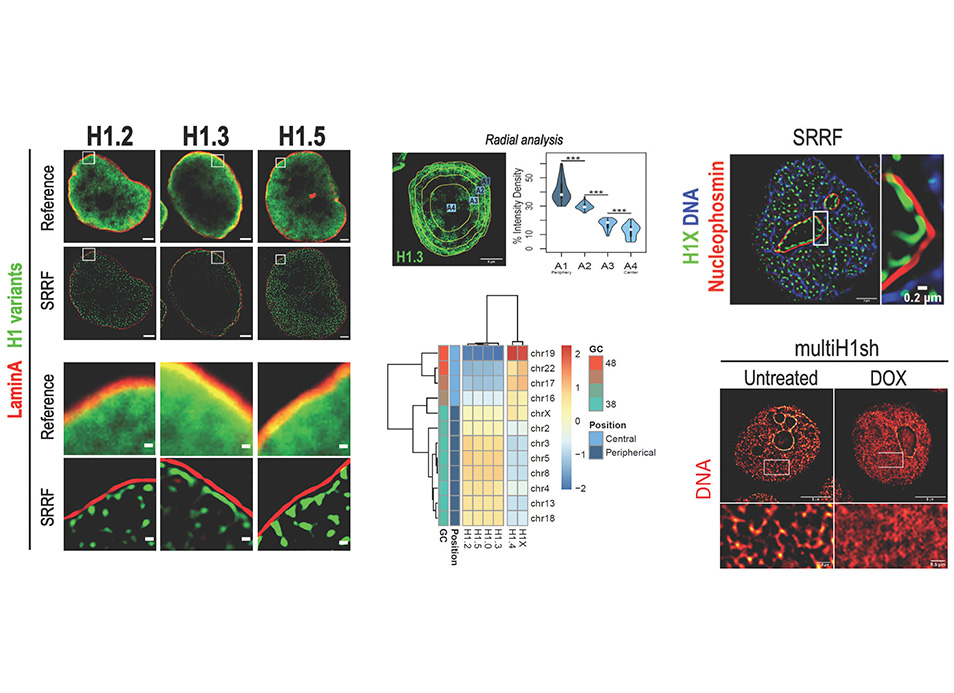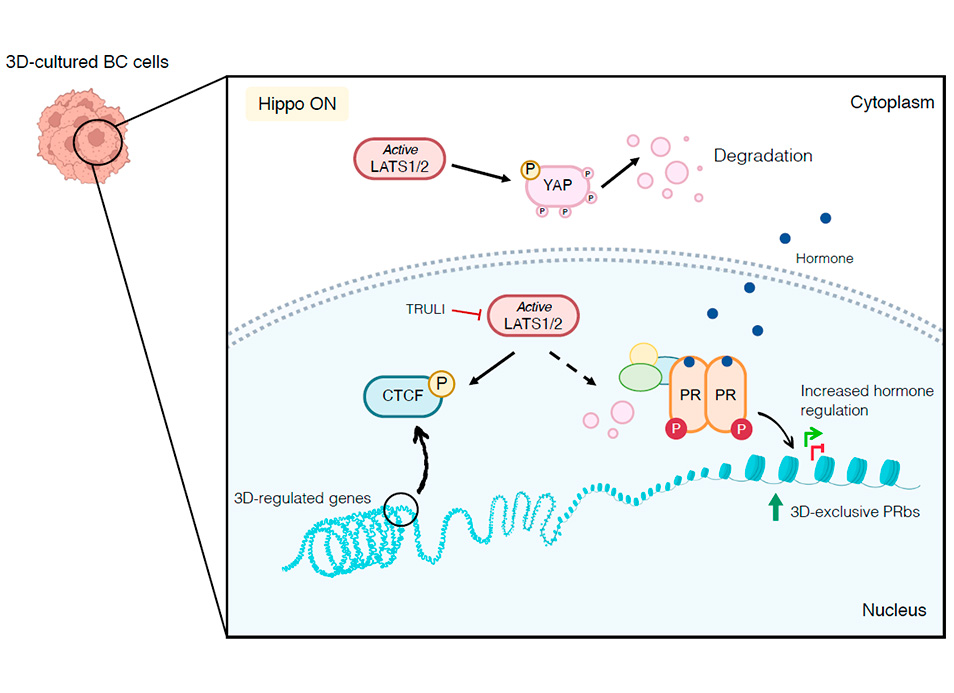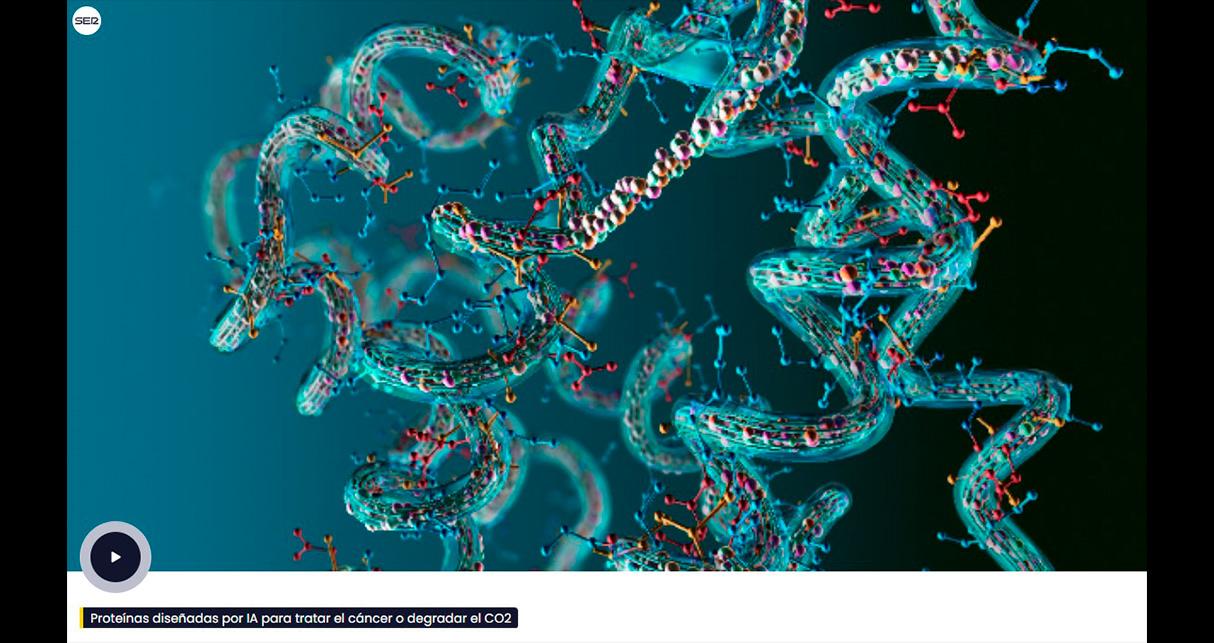New publication in eLife of the Jordan Lab in collaboration with the IBMB Imaging Platform showing that…
Control of hormone-driven organ disassembly by ECM remodeling and Yorkie-dependent apoptosis
Researchers from the IBMB-CSIC study the cellular process in the formation of organs during the life of organisms.
- A new study, published in the journal Current Biology, analyzes the evolution of the larval trachea of the fly Drosophila melanogaster during its metamorphosis.
- Not only organs are formed In the development of an embryo, but tissues are dismantled and replaced that will not be needed in adult life.
Jordi Casanova researcher from the Molecular biology institute of Barcelona (IBMB-CSIC) and head of the Drosophila Development and Morphogenesis laboratory at the Institut de Recerca Biomèdica (IRB Barcelona), is co-leading this study that seeks to understand how the transformations that occur in the organs of Drosophila melanogaster when passing from the larval stage to the adult stage. This study can be extrapolated to other organisms such as the human being himself, since this process also takes place, for example, during the development of the sexual glands.
Dismantle organs that will not be needed in adult life.
The trachea of the Drosophila fly, during the pupal or chrysalis phase, loses tissue in its posterior part and is replaced by a new trachea in its adult phase. This dismantling of tissues and organs is part of the necessary process that organisms follow in their transition from initial structures to more mature ones necessary for adult life.
The researchers of this study have identified the two phases in which this transformation process from larvae to adult organism takes place, as well as the essential role that a series of proteins play in it. During the first phase there is a progressive shortening of the trachea in which the number of cells remains stable. In this process, the intervention of the apical extracellular matrix (aECM) stands out. During the second phase, the posterior metamers (tubular forms that form the trachea) undergo programmed cell death or apoptosis due to the action of the Yorkie protein (Yki). In this second phase, the progenitor cells are saved from cell death and give way to the adult organ.
The case of this fly allows researchers to study the dismantling and shortening of organs during the development and life of organisms. This insect is used as a model organism in genetic and developmental studies for its experimental advantages.
Jordi Casanova declares that “until now the focus of the studies has been located mainly on the process of construction of organic structures, but the development of organisms is a dynamic process in which these structures are not only built, but also they dismantle organs either because they are not needed or because of wear and tear due to their use. This process is especially important during aging, which is just another stage in the development or evolution of an organism. If we want to understand aging and approach it from a health point of view, it is crucial to understand these processes ”.
The first author of this article is Dr. Juan J. Fraire-Zamora, a postdoctoral researcher in the laboratories of Dr. Jérôme Solon (Ikerbasque) and Dr. Jordi Casanova. Sébastien Tosi from IRB Barcelona also participated in the article. The article is a collaboration between IRB Barcelona, IBMB-CSIC, CRG and Ikerbasque. The study has received funding from the Spanish Ministry of Science and Innovation, the CERCA program of the Generalitat de Catalunya, the Biofisika Bizkaia Foundation and the Basque Excellence Research Center of the Basque Government.
Press release by CSIC Communication department Catalonia.
Reference:
Juan J. Fraire-Zamora, Sébastien Tosi, Jérôme Solon, Jordi Casanova, Control of hormone-driven organ disassembly by ECM remodeling and Yorkie-dependent apoptosis, Current Biology, 2021.

Image of Drosophila tracheae in different stages of larvae and metamorphosis. The first stage of progressive reduction can be seen followed by the second stage of drastic reduction.



